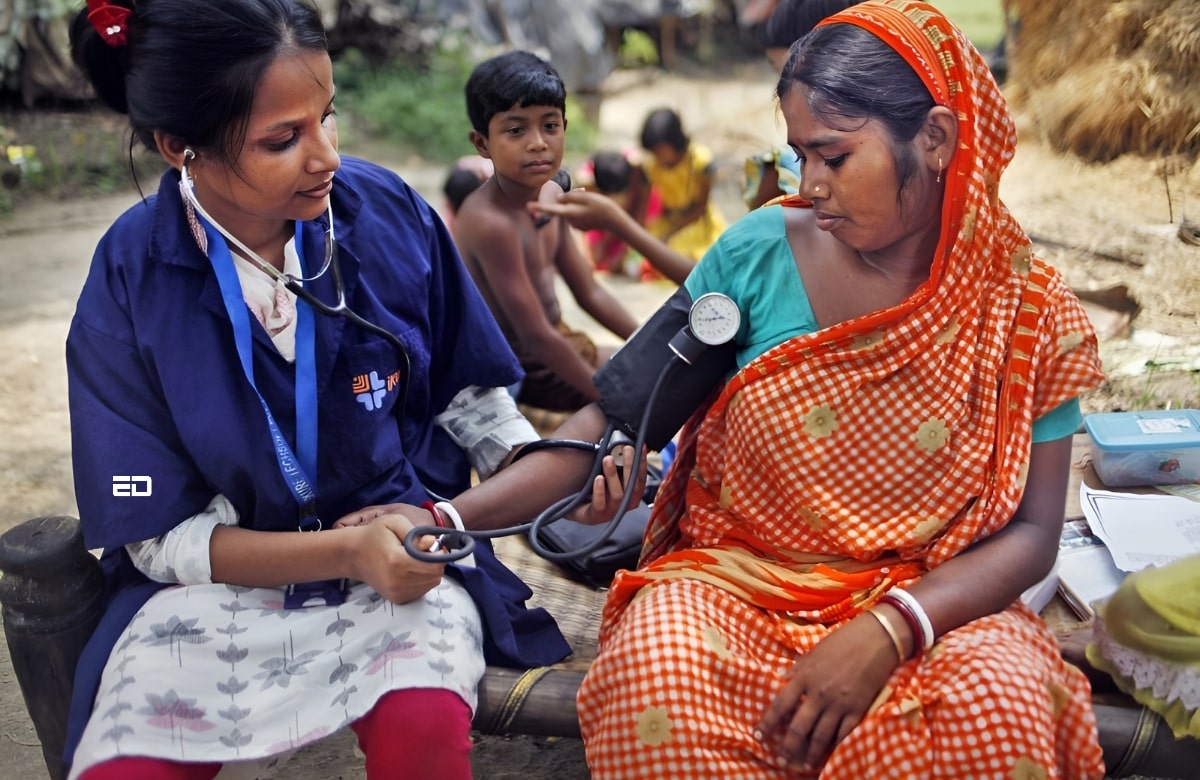As India is undergoing rapid urbanisation, health goals of the 17 Sustainable Development Goals (SDGs) are unlikely to be met unless both rural and urban areas are given their share of importance in policy making.
India is still facing a zillion challenges due to which urban health outcomes remain adverse especially for the urban poor, and service provision remains extremely inadequate for all, with a much higher burden on the less privileged.
Here’s a detailed analysis of the urban health challenges India faces.
Why Is The India Urban Sector Facing Challenges In The Healthcare System?
According to the 2011 Census, the urban population comprises 31.2% of the total population in India.
Niti Aayog, the public policy think tank of the Government of India, has a dashboard that monitors different health indicators in urban areas. The problem is that the list of these indicators is not comprehensive enough to guide policy on urban health.
It mainly covers maternal and child health indicators along with TB (tuberculosis), the latter being part of the health and well-being domain of SDG indicators.
The set of indicators pertaining to non-communicable diseases is not a part of the SDG urban index prepared by NITI Aayog, and monitoring is done for only selected 56 cities, out of a total of 400 cities.
The National Sample Survey (NSS) and the National Family Health Survey (NFHS), the available national health data sets do collect indicators on urban health, the volume of research on comparative rural-urban health outcomes, especially the rural-urban poor has been much lower compared to health outcomes in rural areas.
The National Health Policy 2002 highlighted the disparity in health service delivery in urban areas due to a non-uniform organisational structure, unlike a uniform three-tiered structure in rural areas and meagre public health infrastructure in slum areas.
The NHP 2002, therefore, stressed the importance of strengthening public health infrastructure in urban areas which were more heterogeneous in terms of habitation compared to rural areas.
Read More: ResearchED: Why Does India Have Third-Highest Percentage Of ‘Zero-Food Children’
Why Are Urban Health Policies Lagging Behind?
The reason for the lesser focus on urban health in health policies could be attributed to the intractability of analysing urban spaces. Urban spaces are harder to define geographically, economically, socially, and politically.
Moreover, urban systems are difficult to comprehensively understand compared to rural spaces. The ease of analysing the rural has translated into the fact that much of the health sector analyses have centred around rural regions globally, and in countries with explosions in urban population like in India.
Furthermore, the heterogeneity in political and administrative structures of urban habitats makes interventions, programs, and policies harder to implement as well as analyse leading to a non-coherent body of such activities and actions that pertain to urban sectors.
Even the terminologies used in government documents differed across documents at times between states and over time. For example, metropolitan areas defined by the Constitution, urban agglomeration with population above 1 million defined by the Census, and metropolitan cities defined by Urban and Regional Development Plan Formulation and Implementation are not homogenous.
The fast growing urban areas lack any semblance of planned governance and it has been contended that the myriad terms have no operational significance.
“There is no governance structure at the metropolitan region level. Nor are there any funds earmarked collectively for planned development of these large urban settlements,” said the annual report of the Indian Council for Research on International Economic Relations (ICRIER 2019).
Another problem that has made the task of health policy more difficult is the introduction of a distinct group, the ‘urban poor.’ The health status of the urban poor is relatively worse and the accessibility to the health system is determined by the socioeconomic status of the population.
The National Family Health Survey (NFHS) data for 2005-06 reveals this fact by indicating that the utilisation of reproductive and child health (RCH) services was mainly concentrated among the urban non-poor across most of the states and there were significant gaps in delivery services between urban poor and non-poor populations.
Political economic factors of local governance have also impacted policy implementation in urban health because the state governments have the power and authority to decide the structure and functioning of the urban local bodies.
Thus, municipal corporations have little room to make any significant changes in the local policies which leads to a lack of accountability in local governance.
Another pertinent issue is the lack of a coherent health coverage program in the country that covers all residents for basic healthcare services. The Employees State Insurance Corporation, Railways, Defence, and other coverage by ministries are the most comprehensive coverage that any good health coverage system can offer.
However, these schemes are unavailable for those not employed by these ministries. ESIC covers formal sector workers, however, the large population of the informal sector workers is not covered by any program.
Therefore, it is extremely important to sensibly address urban health requirements and an urgent overhaul of institutional, administrative, and governance structures that currently often work in parallel without converging.
Such reforms would have a far-reaching impact on not only the health sector but on other sectors such as education, labour, water, and sanitation.
Image Credits: Google Images
Feature image designed by Saudamini Seth
Sources: Centre for Social and Economic Progress, Niti Aayog, WHO
Find the blogger: Unusha Ahmad
This post is tagged under: Urban, rural, health, healthcare, education, labour, sanitation, water, sectors, reforms, governance, administrative, ESIC, formal sector, informal sector, railways, defence, municipal corporations, local, NHS, RCH, government, policy, urban poor, ICRIER, socioeconomic, infrastructure, policy, NHP 2002, Urban and Regional Development Plan Formulation and Implementation, census, constitution, cities, metropolitan, India, SDG, policymaking, NFHS, NSS, Niti Aayog
Disclaimer: We do not hold any right, or copyright over any of the images used, these have been taken from Google. In case of credits or removal, the owner may kindly mail us.



























